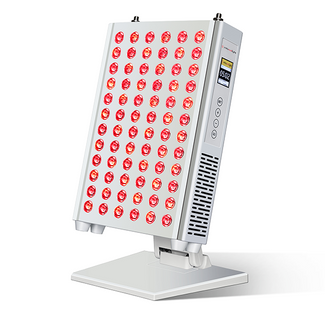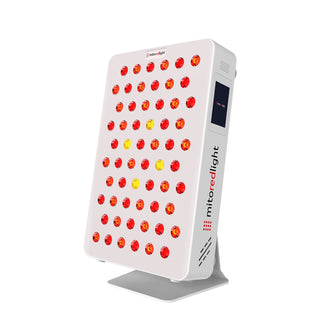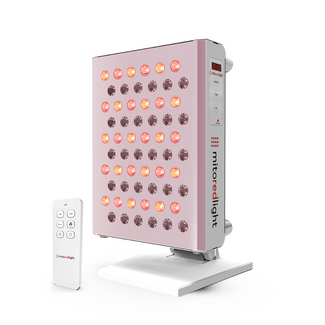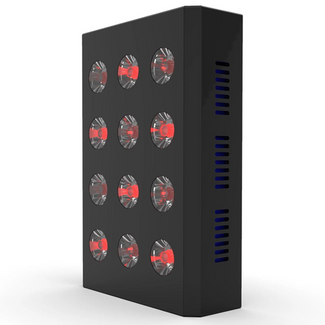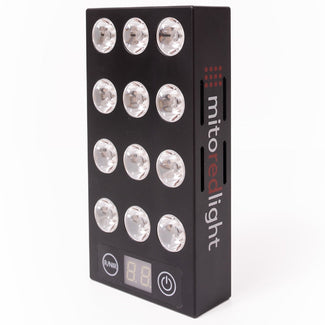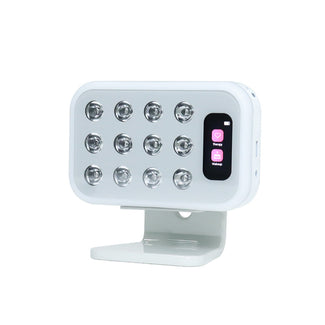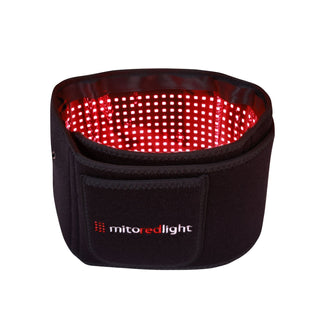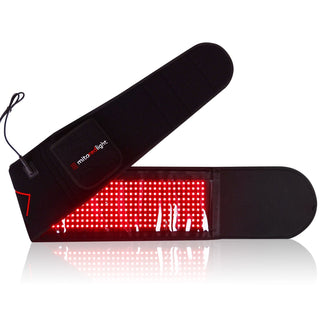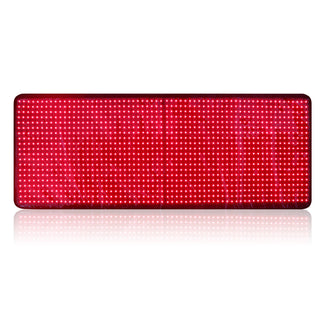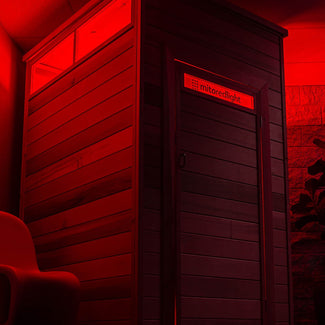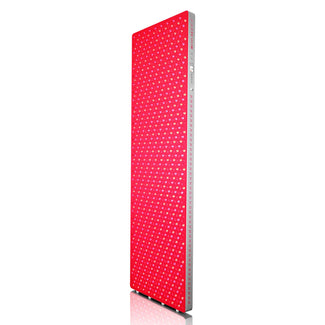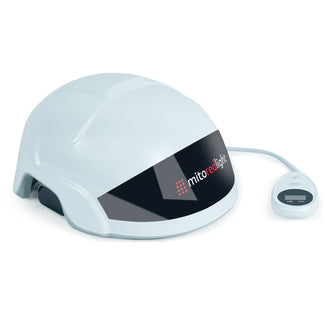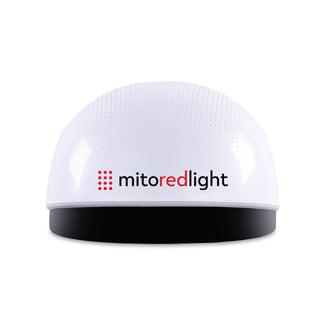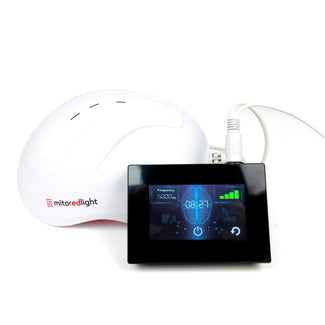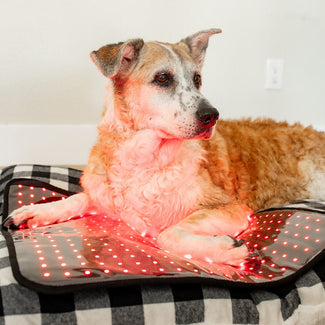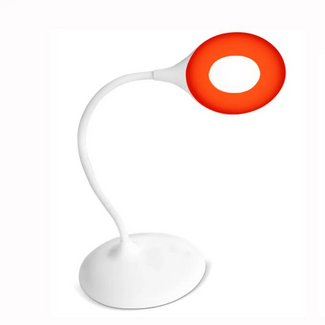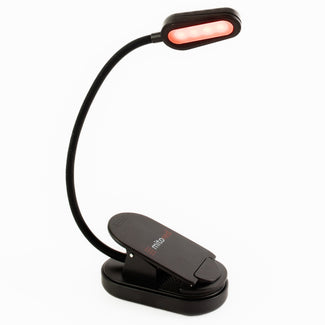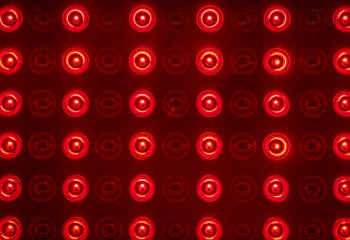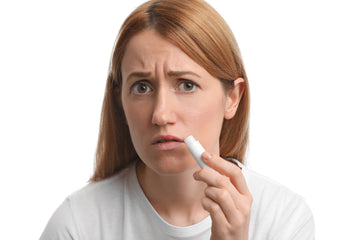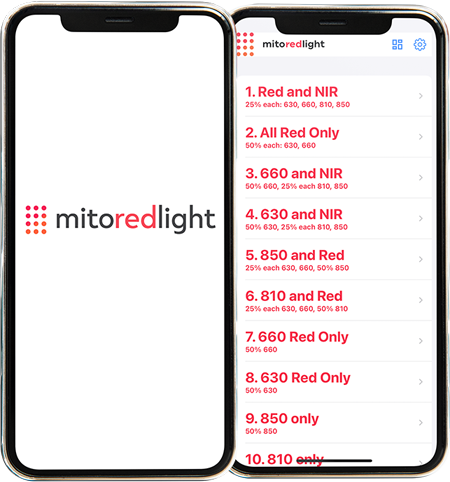
Red light therapy is a new and exciting tool that can people are using to boost brain health and overall well-being. Red light therapy is a more recently-developed form of therapy and is used to stimulate energy within cells. People are using red light therapy to promote sleep, manage pain, improve muscle recovery, and promote their health in many other ways.
One emerging application of red light therapy is using it to promote brain health. There are several studies supporting that this NASA-funded [1] technology can effectively improve brain health and well-being. Most research in this area has focused on using red light therapy to help heal or slow difficult-to-treat neurological diseases. The successes that researchers are seeing, however, suggest it may help augment brain performance in healthy people. Research into this application of red light therapy is ongoing, with many people beginning to use red light therapy to support their brain health.
All About the Brain
For an organ that only weighs 3 pounds, the brain has stunning complexity! It runs our nervous system, in turn commanding our movements, fostering our thoughts, and shaping our behaviors. The brain, along with the spinal cord, makes up the central nervous system (CNS), the main control center that receives, interprets, and directs signals from all corners of the body.
Brain Structure
The brain itself consists of various interconnected parts [2], each performing unique functions. The main sections of the brain are:
- The cerebrum - The largest part of the brain, the cerebrum spans the upper part of the brain. It's divided into two hemispheres, each responsible for different activities. This part of the brain manages cognitive functions, emotions, and motor functions.
- The cerebellum - Located at the back of the brain, the cerebellum plays a critical role in balance, posture, and coordination of voluntary movements. Your ability to walk, use a fork, ride a bike, and much more all depend on your cerebellum.
- The brainstem - Connecting the brain and spinal cord, the brainstem controls numerous automatic functions. The roles it controls are necessary for survival, roles such as breathing, digestion, sleeping, and even the rate at which your heart beats.

The brain processes signals that come in from the rest of your body, determining what is important and what isn’t. The brain also interprets these signals, giving meaning to the world around us. In addition to the signals it receives and processes, it also sends signals out. These signals result in muscle movements that allow you to control what goes on around you.
At a microscopic level, the brain is more complex than a supercomputer, using about 100 billion neurons [3] that each have about 7000 connections. Remarkably, even though the brain is more powerful than the most advanced electronics in existence, it only uses about 12 watts of power, a fifth of what a laptop computer uses.
Importance of the Brain
The brain is obviously important because it allows us to perceive the world around us and affect what is happening. The role of the brain, however, goes far beyond allowing us to sense what is happening and move our muscles in response.
Our brains are the seat of our thoughts, emotions, memories, creativity, and many other advanced functions. Our brains are responsible for allowing us to interact with others, develop new technologies, create beautiful art, and remember events from years or decades ago.
One vital function of the brain is its role in socialization [4]. How we interact with others, our ability to distinguish between what someone is saying and what they mean, being able to infer what someone else is thinking, and knowing how to respond are all advanced functions of the brain that we often take for granted. It is ultimately our brains that give us a sense of who we are and how to interact with others.
Brain Health
Brain health [5] refers to the ability of the brain to perform all its vital functions effectively, not only functioning but functioning well. Healthy brains maintain our cognitive abilities, motor skills, emotions, memory, and every other aspect the brain controls. A healthy brain enables us to carry out the numerous physiological and psychological tasks required for us to live our everyday lives.
The health of our brains can be influenced by a myriad of factors, including genetics, environmental exposures, lifestyle, and overall physical health. Your brain is highly interconnected with the rest of the body and is impacted by your body’s overall health. Certain diseases, such as hypertension, diabetes, and heart disease, can impact brain health and well-being, affecting more than just your body.
It is important to remember that brain health is not static; it changes as we age and in response to what we do and experience. Some changes might be positive, such as gaining wisdom from life experiences, while others could be negative, such as a decline in certain cognitive functions.
The brain also has neuroplasticity, allowing it to adapt and change in response to experiences, learning, and injury. This plasticity allows the brain to remodel and strengthen its neural connections, aiding in learning and memory formation, and even allowing partial or complete recovery from brain injuries.
Disorders Affecting the Brain
While our brains are resilient and adaptable, there are many different diseases or conditions that can affect them. Some of these conditions have a slow onset, gradually undermining our cognitive functions over time, while others strike abruptly, causing immediate damage.
Our brain gives us control of what happens, influences how others interact with us and provides us with our sense of self. Because of this, diseases affecting the brain are considered to be among the worst types of diseases someone can get. Here are some of the most common brain disorders that people are likely to encounter.
Alzheimer's Disease
Alzheimer's disease [6] is a progressive neurological disorder that is commonly associated with aging. The exact cause of Alzheimer’s disease is still not fully understood, and research in this area is ongoing.
While researchers are still determining how Alzheimer’s disease happens, there are no questions as to its effects. It gradually erodes an individual's memory, gradually impairing their thought processes until they lose the ability to remember family members and perform simple tasks. This terrible disease is the most common cause of dementia among older adults.
Often people with this disease will require increasing levels of care as their memory deteriorates. Currently, there's no cure for Alzheimer's disease, but medications and management strategies may temporarily improve symptoms and quality of life.
Parkinson's Disease
Parkinson's disease [7] is a progressive nervous system disorder that primarily affects movement. Its hallmark signs include tremors, rigidity, and a slow, shuffling gait. As Parkinson's disease progresses, it may also lead to cognitive and behavioral changes, depression, sleep problems, and difficulties with speech and swallowing. It can eventually lead to dementia-type symptoms and memory loss.
Parkinson's disease is thought to occur due to decreased levels of a neurotransmitter called dopamine. Studies show that those with Parkinson’s disease have low dopamine levels [8], and medicines that increase dopamine levels do help slow the progression of the disease. The exact way that reduced dopamine levels develop, however, is still under research. While there's no cure for Parkinson's disease, medications can significantly improve the symptoms, and therapies can help manage the condition.
Stroke
Strokes [9] are a common cause of brain injury, often occurring relatively suddenly. There are two main types of strokes:
- Hemorrhagic strokes - These strokes are uncommon but are quite dangerous. They occur when a blood vessel in the brain bursts, causing bleeding in the brain that damages brain tissues and increases pressure on the brain. Hemorrhagic strokes cause immediate, irreversible damage while also putting pressure on the brain in general, further increasing negative effects.
- Ischemic strokes - These strokes are the most common type of stroke and occur when a blood vessel in the brain is blocked. This blockage interrupts oxygen flow to the brain, affecting the function of cells, eventually killing them. Ischemic strokes are treatable if they are immediately addressed. It takes about three hours without blood flow for brain cells to die, and if blood flow can be restored quickly, these cells can be rescued.
Stokes cause several symptoms, but the most noticeable is a weakness that only affects one side. This can cause facial drooping, arm weakness, or slurred speech. If someone suddenly develops these symptoms, it is important that they immediately seek medical help.
Most strokes are treatable if they are treated within a few hours of beginning to develop. Past that point, however, the damage becomes permanent, and treatment shifts to adapting to the changes and relearning as much as possible using the healthy parts of the brain. Therapies and medication can help manage the symptoms and aid recovery, and lifestyle changes might help prevent future strokes.
Traumatic Brain Injury

Traumatic brain injuries [10] are typically caused by violent blows or jolts to the head. This causes direct injury to brain tissues and disrupts the normal function of the brain. Any type of trauma can cause a traumatic brain injury; however, the most common causes include falls, firearm-related injuries, car accidents, or physical assault.
Symptoms vary from mild to severe, depending on the extent of the damage to the brain, and may include headaches, nausea, confusion, speech difficulties, and even coma. Traumatic brain injuries in their most mild forms are simple concussions, while the most severe traumatic brain injuries can leave people in comas for decades.
Treatment for traumatic brain injuries involves measures to prevent further injury and promote recovery. Depending on the severity, they may require rehabilitation therapies and even supportive care.
Anoxic Brain Injury
Anoxic brain injury [11] occurs when brain tissue doesn't get enough oxygenated blood, causing damage or death to brain cells. “Anoxic” or “anoxia” literally means “without oxygen.” Anoxic brain injury can cause a wide range of impairments depending on how severe it is.
Anoxic brain injury is caused by any condition that results in decreased oxygen delivery to the brain for a prolonged period of time. Common causes of anoxic brain injury may include drowning, choking, cardiac arrest, and carbon monoxide poisoning. One growing cause of anoxic brain injury is drug overdose, especially opioid overdoses.
Treatment for anoxic brain injury depends on the severity and underlying cause of the injury. In some cases, rehabilitation may be effective in helping to restore cognitive and neurological function. In other cases, treatment may focus on managing symptoms and preventing further injury.
Treatment for Neurological Diseases
Despite even the best attempts to promote brain health, neurological diseases can still develop. When they do occur, the treatment relies on a multidisciplinary approach that can include medical, surgical, and rehabilitative interventions.
Depending on the condition, medications can manage symptoms, reduce inflammation, or slow down the progression of the disease. Surgery may be an option in some cases, especially when the disease causes pressure on the brain or spinal cord. Additionally, rehabilitative interventions such as physical therapy, occupational therapy, or speech therapy can help improve the patient's quality of life and reduce disability.
Tips for Optimizing Brain Health
Brain health plays a crucial role in our overall well-being, yet it's often overlooked. A robust and resilient brain bolsters our cognitive abilities, enabling us to learn, adapt, create, and make sound decisions. On the flip side, poor brain health can make us susceptible to memory loss, mental health issues, and neurological conditions.
As Benjamin Franklin famously said, “An ounce of prevention is worth a pound of cure.” This is especially true when it comes to neurological disease. Managing risk factors by treating underlying conditions and adopting a healthy lifestyle can help prevent or delay the onset of neurological conditions. Here are some top tips for optimizing brain health [12]:
- Regular Exercise - Exercise increases heart rate and promotes the flow of blood and oxygen to your brain. It also promotes neuroplasticity, allowing brain cells to adapt and reorganize more effectively. Studies show that regular physical activity can help improve memory and thinking skills.
- Healthy Diet - What you eat can significantly impact your brain health. Foods rich in antioxidants, good fats, vitamins, and minerals all provide energy and aid in protecting against brain diseases. 20% of your body’s energy is used by the brain, making healthy sources of energy essential to brain health.

- Adequate Sleep - Sleep is essential for memory consolidation and removing brain toxins that accumulate while we are awake. Consistent lack of quality sleep is highly correlated with many negative neurological conditions.
- Stress Management - Chronic stress impairs cognitive ability and affects your psychological well-being. Stress doesn’t only cause temporary neurological stress; it also increases the risk of serious conditions like Alzheimer’s disease and dementia. Techniques such as mindfulness, meditation, and yoga can help manage stress levels.
- Hydration - Being adequately hydrated is crucial for brain health, potentially improving concentration and cognitive performance. Staying well hydrated involves drinking plenty of water and limiting dehydrating beverages like coffee and soda.
- Weight Management - Maintaining a healthy weight [13] is important for keeping your brain healthy. Being overweight can increase the risk of Alzheimer’s disease and dementia while maintaining a healthy weight can improve cognitive function.
- Cognitive Training - Cognitive training exercises like doing puzzles, memory games, or even reading can enhance brain connectivity, improve fluid intelligence, and help keep your brain in shape.
- Social Interaction - Maintaining an active social life can ward off depression and stress while promoting neurological health. Regular engagement in social activities and maintaining a close-knit circle of friends are key strategies for promoting social interaction and avoiding the negative effects of loneliness.
- Mental Health Care - Taking care of your mental health is as essential as maintaining physical health. Regular check-ups with a psychologist or counselor can ensure your emotional well-being and play a crucial role in overall brain health.
- Regular Medical Check-ups - Your brain’s health depends heavily on your physical health. Regular medical check-ups can help detect health problems before they start and give you the best chance of getting the right treatment quickly, avoiding any complications and impact on brain health.
- Limit Alcohol - Excessive consumption of alcohol can affect you in many ways and increases the risk of brain-related health problems. Alcohol physically affects your liver and the absorption of vitamin B1 in ways that can cause temporary and permanent brain injury.
- Quit Smoking - Smoking increases the risk of cognitive decline. It damages brain cells and increases the risk of diseases that can cause anoxic brain injury. Stopping smoking will promote your brain health.
- Learn Something New - Learning new skills exercises your brain and can help improve cognitive functioning. This tip can be tailored to your interests and could involve learning a new language, a new instrument, a new hobby, or anything else that challenges and stimulates your brain.
- Listen to Music - Research suggests that listening to music can improve memory, attention, and even mental math abilities. Research shows that listening to classical music can be especially beneficial to your brain compared to other music types.
- Positive Mood - Maintaining a positive mood helps your brain health. Laughter especially engages multiple regions across the whole brain. Trying to keep a positive outlook on life is important for maintaining brain health.
Understanding Red Light Therapy
Red light therapy, also sometimes called photobiomodulation or low-level laser therapy, involves exposing the body tissues to red or infrared light. These specific wavelengths of light are thought to be absorbed by mitochondria [14], the tiny organs within cells that are responsible for energy production. Stimulation of mitochondria increases energy production, allowing cells to suppress inflammation, replicate more quickly, and produce more energy.
It has long been understood that light is absorbed by the body, causing diverse physical effects. From the cells of the retina of the eye that allow for sight to skin cells that absorb ultraviolet light to make vitamin D and melanin (a protein that pigments the skin), light is known to affect the body.
The effects of red light, however, have only been discovered more recently. Red light has some significant differences from ultraviolet light, another biologically active form of light. Ultraviolet light causes many effects on the body but can be dangerous. It has a short wavelength and is high energy. Red light, on the other hand, has a long wavelength and low energy. While high-energy ultraviolet light can increase risks like skin cancer, red light is considered much safer
People use red light therapy for a variety of reasons. It has been shown to help promote sleep, improve wound healing, potentially stimulate weight loss, improve athletic performance, and improve skin quality [15]. One new and significant application for red light therapy is improving brain health.
Red Light Therapy and Brain Health
Emerging research suggests that red light therapy could have neuroprotective effects, potentially benefiting individuals with neurological disorders. By improving mitochondrial function, red light therapy may enhance neuron vitality, promoting neurogenesis and synaptic plasticity. There are several studies supporting the effectiveness of using red light therapy to support brain health.
Early Cognitive Research
One of the earliest studies [16] on the use of red light therapy for cognitive applications emerged with a study published in Stroke, a highly reputable journal maintained by the American Heart Association. This study was published in 2007 and included 120 patients. The research found that infrared light was safe and effective for treating ischemic strokes when initiated within 24 hours of the stroke occurring. The authors concluded that a larger confirmatory trial was warranted but pointed out the potential promise this therapy offers.
Another early study [17] was published in 2014, examining the effects of red light therapy on optic nerve injury, retinal degeneration, traumatic brain injury, and spinal cord injury. The study found that therapy was beneficial for helping repair damaged optic nerves and protecting neurons. The study also showed that red light therapy did not help improve retinal degeneration. The key result from this study was the demonstration that red light therapy could help protect nerves and enhance their ability to repair damage they experienced.
In 2016, a review [18] published in the prestigious Frontiers in Neuroscience recognized the potential cognitive applications of red light therapy but also pointed out that this use was “in its infancy” and still in the “proof of concept” stage. Nonetheless, the researchers advanced a view that red light therapy had powerful potential for potentially slowing the progression of neurological diseases by protecting neurons from death. They concluded by promoting continued research into the potential benefits.
US Department of Veterans Affairs Research
Some significant early research on using red light therapy to help the brain comes from the US Department of Veterans Affairs (VA). The VA’s interest appears to have begun with a study [19] in 2014 that was published in the Journal of Neurotrauma. The study followed eleven individuals with traumatic brain injury and used empirical medical tests, like the Stroop test for Executive Function, California Verbal Learning Test, Long Delay Free Recall, and more, to demonstrate that red light therapy improved cognitive function for these patients. The study also found that participants also reported improved sleep and fewer post-traumatic stress disorder episodes in those who had PSTD.
Following the results of this study, the VA announced [20] four different studies on using red light therapy to improve brain health. The main focus of these studies was traumatic brain injuries, a relatively common combat injury.
These studies appear to be yielding results. In 2018, a study [21] published in Photomedicine and Laser Surgery showed that red light therapy “significantly improved neuropsychological scores” in many of the categories being evaluated. The study also showed increased blood flow to areas of the brain where red light therapy was applied in two-thirds of the study participants. The study concluded that red light therapy “shows promise in improving cognitive function and [regional cerebral blood flow] several years after TBI,” indicating a potential treatment well after the injury occurred.
Modern Reviews
While the VA may have been an early catalyst for research into the use of red light therapy for brain health, many other studies have been published since then. Starting in 2016, reviews of foundational research became more common, laying the groundwork for more clinical studies.
One of the foundational reviews [22] in this area was published in 2016 in the BBA Clinical. This study not only explored the effectiveness of using red light therapy but also reviewed several other studies that used research in animals and humans to explore the mechanisms of how red light therapy promoted brain health. The BBA Clinical study showed that the effects of red light therapy on the brain could be due to:
- Mitochondrial stimulation
- Increased blood flow to the brain
- Light-mediated changes to molecular channels in the cells
- Changes in how cells express DNA
The study suggested a combination of these factors is in play. The study also evaluated how well red light therapy penetrates the skull, showing that it could penetrate the skull a few inches (reaching large volumes of brain tissues), and infrared light penetrated better than red light.
There are many other significant reviews on the use of red light therapy to promote brain health. Some of the more prominent of these include:
- A 2017 review [23] published in the Journal of Neuroscience Research found that the use of red light therapy had been demonstrated to increase regional cerebral blood flow, tissue oxygenation, and improve memory, mood, and cognitive function. The review also showed that red light therapy had provided benefits for people with traumatic brain injuries and helped to improve executive function and working memory. The review also pointed to improved sleep as a known effect of red light therapy that also had cognitive implications.
- A 2020 paper [24] in Frontiers in Aging Neuroscience proposed a study design by which the effects of red light therapy on mild to moderate Alzheimer’s Disease could be thoroughly studied. While this paper did not provide any results itself, it played a role in laying the foundation for current research activities.
- Another 2020 study [25], also published in Frontiers in Aging Neuroscience, examined the literature supporting the potential use of red light therapy in treating Parkinson’s Disease. The researchers found evidence that supported the hypothesis that red light therapy could mitigate the neurodegenerative process. They also proposed consideration of administering red light therapy through implanted delivery devices. It remains to be seen if this unusual approach will be tested in the future.
- A 2020 literature review [26] published in Neural Regeneration Research explored potential applications for using red light therapy in treating stroke, traumatic brain injury, Parkinson’s disease, Alzheimer’s disease, major depressive disorder, and other cognitive diseases. The researchers found “preliminary evidence that [red light therapy] is an effective therapeutic tool for the treatment of central nervous system diseases”. Based on their findings, they recommended additional, larger studies so treatment parameters could be optimized.
- One study [27], published in 2021 in Photomedicine and Laser Surgery, demonstrated that red light therapy “may alleviate sleep disorders, depression, cognitive function, and other clinical symptoms.” This study suggested further research on the topic.
- In 2022, Australian researchers [28] proposed mechanisms to explain the improvement that red light therapy created in animals with Alzheimer's disease and Parkinson’s disease. They also highlighted the excellent safety profile of red light therapy and explored how it could be practically used. The researchers recommended a large-scale clinical trial to further prove the utility of red light therapy.
- Also in 2022, research [29] published in Frontiers in Pharmacology extensively reviewed existing research, finding that red light therapy “has much potential as a future option for treating acute and chronic brain pathologies, including neurodegenerative disorders.” The researchers highlighted the many features of red light therapy that made an ideal treatment option, including its “safety, the convenience of use, and a wide therapeutic window.” The researchers found that high-quality, large placebo-controlled randomized clinical trials would be an important next step in helping adopt widespread use of red light therapy for cognitive illnesses.
- Research [30] published in Neural Regeneration Research in 2023 explored the mechanisms and theory behind the potential benefits of red light therapy in treating epilepsy. The researchers found that it had the potential to improve “the abnormal neuronal firing and seizure-like activity and the neuronal death.” They concluded, “The stage is set for the development of a large-scale clinical trial.”
Modern Studies and Experiments
There have been many recent reviews, study designs, and literature-based studies; however, these have helped to lay the groundwork for many experimental studies. Most of the major studies on the cognitive effects of red light therapy are relatively recent, with many of them being published no earlier than 2020. Some of the more impactful of these studies include:
- The Journal of Neurology and Neuroscience published a small, controlled study [31] in 2017 that followed 11 patients who used red light therapy helmets to help treat memory and cognition in dementia patients. The study found improved clock drawing, immediate recall, praxis memory, visual attention, and task switching follow treatment. The research also noted improved brain activity when measuring the brain using electroencephalography.
- In 2020, a study [32] published in the Journal of Neurotrauma studied the effects of red light therapy on spinal cord injuries in rats. The researchers were able to dissect the rats’ spinal cords after treatment, providing them with deep insights into the effects of therapy. The researchers noted “significantly reduced neuronal cell death,” “reduced astrocyte activation,” and reduce expression of factors that inhibit healing. While these results still need to be replicated in humans, they do demonstrate promise for those who have experienced spinal cord injuries.
- Another 2020 study [33], published in Cerebral Cortex Communications, examined the effects of red light therapy on brain activity. The researchers showed that near-infrared light synchronizes brain activity using the light itself, not the thermal effects of the light.
- A controlled study [34] that included 68 and was published in JAMA Open Network demonstrated that administering red light therapy through the skull could be done, that it is safe, and that it “affects the brain in a measurable manner.” The study, like many others around the same time, focuses on laying the foundation for more advanced studies in the future.
- 2021 research [35] published in Hippocampus described red light therapy as a “promising treatment for memory loss during aging and in age-related diseases such as Alzheimer’s Disease.” This research proposed that red light therapy’s effect on the brain was due at least in part to how it interacted with and changed an important part of the brain called the hippocampus.
- A very small but very promising study [36] was published in 2021 in BMC Neurology. This study only included six individuals but showed that red light therapy could improve clinical signs of Parkinson’s disease for up to a year. The long-term effectiveness of this treatment method is likely to stimulate interest in expanded research in this area.
- Another 2021 study [37], published in Aging and Disease, explored using red light therapy to support people with dementia. 60 patients were evaluated using empirical cognitive tests accepted and validated by the medical community. These tests showed improvement in their cognitive performance after treatment. Additionally, the study reports: “Patients reported improved sleep after about 7 days of treatment. Caregivers noted that patients had less anxiety, improved mood, energy, and positive daily routine after about 14-21 days of treatment.”
- Another study [38] was published in 2021 in Photobiomodulation, Photomedicine, and Laser Surgery. Unlike most of the research on this topic, this research studied using red light therapy to improve brain health in people who did not have any kind of neurological disease. The study showed “significant improvement in motor function, memory performance, and processing speed” when compared to a placebo group.
- In 2022, research [39] published in Alzheimer's Research & Therapy tested red light therapy in mice and found that it protected against neurodegeneration. The study supported the use of light for therapeutic research in the treatment of Alzheimer’s disease.
It is important to keep in mind that research into how red light therapy affects the brain and what results it provides is still ongoing and has not been fully proven. Further research is necessary to continue to validate initial research and figure out exactly how red light therapy works on the brain and how important the benefits are that it provides.
Using Red Light Therapy for Your Brain
Red light therapy may be a powerful tool for promoting brain health and preventing or delaying some of the effects of aging. While research is still ongoing, there are no known major or potentially dangerous side effects to red light therapy, and it is considered to be quite safe for most people.
Because red light therapy may safely provide meaningful brain health benefits, many people choose to incorporate it into their health routines. Using red light therapy to supplement other lifestyle interventions, like exercise and a healthy diet, could further augment your brain health and cognitive ability.
Mito Red Light
At Mito Red Light, we provide red light therapy products designed to help promote your brain’s health and function. We are releasing the new Mito Red Light Therapy MitoMIND™ Helmet (July 2023) to help you provide near infrared light to your brain as effectively as possible. Additional commercial specific products using the same 810nm wavelength our MitoMIND utilizes can found on our exclusive commercial product partner website prorlt.com
We welcome you to review our selection of high-quality products or to contact one of our expert representatives at 1-866-861-6486(MITO).
DISCLAIMER: Mito Red Light devices are not clinically proven to diagnose, treat, cure or prevent any medical conditions. Mito Red Light devices are low / risk general wellness devices aimed at affecting the body through supporting cellular function. The scientific studies referenced in this article are for educational and informational purposes only and are meant to educate the reader on the exciting and growing field of phototherapy. To see a list of precautionary warnings and contraindications click here.
REFERENCES
[1] NASA. (2022, May 19). NASA Research Illuminates Medical Uses of Light. https://spinoff.nasa.gov/NASA-Research-Illuminates-Medical-Uses-of-Light
[2] American Association of Neurological Surgeons. (2023). Anatomy of the Brain. https://www.aans.org/en/Patients/Neurosurgical-Conditions-and-Treatments/Anatomy-of-the-Brain
[3] Gulati, A. (2015). Understanding neurogenesis in the adult human brain. Indian Journal of Pharmacology, 47(6), 583-584. https://doi.org/10.4103/0253-7613.169598
[4] Adolphs, R. (2009). The social brain: Neural basis of social knowledge. Annual Review of Psychology, 60, 693-716. https://doi.org/10.1146/annurev.psych.60.110707.163514
[5] Wang, Y., Pan, Y., & Li, H. (2020). What is brain health and why is it important? BMJ, 371, m3683. https://doi.org/10.1136/bmj.m3683
[6] Breijyeh, Z., & Karaman, R. (2020). Comprehensive review on Alzheimer’s disease: Causes and treatment. Molecules, 25(24), 5789. https://doi.org/10.3390/molecules25245789
[7] DeMaagd, G., & Philip, A. (2015). Parkinson’s disease and its management: Part 1: Disease entity, risk factors, pathophysiology, clinical presentation, and diagnosis. P T, 40(8), 504-510. https://www.ncbi.nlm.nih.gov/pmc/articles/PMC4517533/
[8] American Association of Neurological Surgeons. (2023). Parkinson’s Disease. https://www.aans.org/en/Patients/Neurosurgical-Conditions-and-Treatments/Parkinsons-Disease
[9] Kuriakose, D., & Xiao, Z. (2020). Pathophysiology and treatment of stroke: Present status and future perspectives. International Journal of Molecular Sciences, 21(20), 7609. https://doi.org/10.3390/ijms21207609
[10] Centers for Disease Control and Prevention, National Center for Injury Prevention and Control. (2023, April 20). Traumatic Brain Injury & Concussion (TBI). https://www.cdc.gov/traumaticbraininjury/get_the_facts.html
[11] Lacerte, M., Shapshak, A. H., & Mesfin, F. B. (2023). Hypoxic Brain Injury. StatPearls [Internet]. https://www.ncbi.nlm.nih.gov/books/NBK537310/
[12] World Health Organization. (2022, August 9). Optimizing brain health across the life course: WHO position paper. https://www.who.int/publications/i/item/9789240054561
[13] Bischof, G. N., & Park, D. C. (2015). Obesity and Aging: Consequences for Cognition, Brain Structure and Brain Function. Psychosomatic Medicine, 77(6), 697–709. https://doi.org/10.1097/PSY.0000000000000212
[14] Tafur, J., & Mills, P. J. (2008). Low-Intensity Light Therapy: Exploring the Role of Redox Mechanisms. Photomedicine and Laser Surgery, 26(4), 323–328. https://doi.org/10.1089/pho.2007.2184
[15] Wunsch, A., & Matuschka, K. (2014). A Controlled Trial to Determine the Efficacy of Red and Near-Infrared Light Treatment in Patient Satisfaction, Reduction of Fine Lines, Wrinkles, Skin Roughness, and Intradermal Collagen Density Increase. Photomedicine and Laser Surgery, 32(2), 93–100. https://doi.org/10.1089/pho.2013.3616
[16] ampl, Y., Zivin, J. A., Fisher, M., Lew, R., Welin, L., Dahlof, B., . . . Oron, U. (2007). Infrared Laser Therapy for Ischemic Stroke: A New Treatment Strategy Results of the NeuroThera Effectiveness and Safety Trial-1 (NEST-1). Stroke, 38, 1843-1849. https://doi.org/10.1161/STROKEAHA.106.478230
[17] Giacci, M. K., Wheeler, L., Lovett, S., Dishington, E., Majda, B., Bartlett, C. A., . . . Fitzgerald, M. (2014). Differential Effects of 670 and 830 nm Red near Infrared Irradiation Therapy: A Comparative Study of Optic Nerve Injury, Retinal Degeneration, Traumatic Brain and Spinal Cord Injury. PLOS ONE. https://doi.org/10.1371/journal.pone.0104565
[18] Johnstone, D. M., Moro, C., Stone, J., Benabid, A.-L., & Mitrofanis, J. (2016). Turning On Lights to Stop Neurodegeneration: The Potential of Near Infrared Light Therapy in Alzheimer's and Parkinson's Disease. Frontiers in Neuroscience, 9, 500. https://doi.org/10.3389/fnins.2015.00500
[19] Naeser, M. A., Zafonte, R., Krengel, M. H., Martin, P. I., Frazier, J., Hamblin, M. R., Knight, J. A., Meehan, W. P., Baker, E. H. (2014). Significant improvements in cognitive performance post-transcranial, red/near-infrared light-emitting diode treatments in chronic, mild traumatic brain injury: open-protocol study. Journal of Neurotrauma, 31(11),1008-17. https://doi.org/10.1089/neu.2013.3244
[20] U.S. Department of Veterans Affairs. (2015, March 31). Can light therapy help the brain? VA study with 160 Gulf War Veterans will test red, near-infrared light. Office of Research & Development. https://www.research.va.gov/currents/spring2015/spring2015-7.cfm
[21] Hipskind, S. G., Grover, F. L., Fort, T. R., Helffenstein, D., Burke, T. J., Quint, S. A., Bussiere, G., Stone, M., & Hurtado, T. (2018). Pulsed Transcranial Red/Near-Infrared Light Therapy Using Light-Emitting Diodes Improves Cerebral Blood Flow and Cognitive Function in Veterans with Chronic Traumatic Brain Injury: A Case Series. Photomedicine and Laser Surgery. https://doi.org/10.1089/pho.2018.4489
[22] Hamblin, M. R. (2016). Shining light on the head: Photobiomodulation for brain disorders. BBA Clinical, 6, 113-124. https://doi.org/10.1016/j.bbacli.2016.09.002
[23] Hamblin, M. R. (2017). Photobiomodulation for traumatic brain injury and stroke. Journal of Neuroscience Research. https://doi.org/10.1002/jnr.24190
[24] Huang, N., Yao, D., Jiang, W., Wei, C., Li, M., Li, W., . . . Tong, Z. (2020). Safety and Efficacy of 630-nm Red Light on Cognitive Function in Older Adults With Mild to Moderate Alzheimer’s Disease: Protocol for a Randomized Controlled Study. Frontiers in Aging Neuroscience, 12, 143. https://doi.org/10.3389/fnagi.2020.00143
[25] Foo, A. S. C., Soong, T. W., Yeo, T. T., & Lim, K. L. (2020). Mitochondrial Dysfunction and Parkinson’s Disease—Near-Infrared Photobiomodulation as a Potential Therapeutic Strategy. Frontiers in Aging Neuroscience, 12. https://doi.org/10.3389/fnagi.2020.00089
[26] Yang, M., Yang, Z., Wang, P., & Sun, Z. (2020). Current application and future directions of photobiomodulation in central nervous diseases. Neural Regeneration Research. https://doi.org/10.4103/1673-5374.300486
[27] Liu, Y., Gong, S., Xia, S., Wang, Y., Peng, H., Shen, Y., & Liu, C. (2021). Light therapy: a new option for neurodegenerative diseases. Chinese Medical Journal, 134(6), 634-645. https://doi.org/10.1097/CM9.0000000000001301
[28] Hamilton, C., Liebert, A., Pang, V., Magistretti, P., & Mitrofanis, J. (2022). Lights on for autism: Exploring photobiomodulation as an effective therapeutic option. Neurology International, 14(4), 884-893. https://doi.org/10.3390/neurolint14040071
[29] Nizamutdinov, D., Ezeudu, C., Wu, E., Huang, J. H., & Yi, S. S. (2022). Transcranial near-infrared light in treatment of neurodegenerative diseases. Frontiers in Pharmacology, 13. https://doi.org/10.3389/fphar.2022.965788
[30] Torres-Martinez, N., Chabardes, S., & Mitrofanis, J. (2023). Lights for epilepsy: can photobiomodulation reduce seizures and offer neuroprotection? Neural Regeneration Research, 18(7), 1423-1426. https://doi.org/10.4103/1673-5374.360288
[31] Berman, M. H., Halper, J. P., Nichols, T. W., Jarrett, H., Lundy, A., & Huang, J. H. (2017). Photobiomodulation with near infrared light helmet in a pilot, placebo controlled clinical trial in dementia patients testing memory and cognition. Journal of Neurology and Neuroscience, 8(1). https://doi.org/10.21767/2171-6625.1000176
[32] Hu, D., Moalem-Taylor, G., & Potas, J. R. (n.d.). Red-light (670 nm) therapy reduces mechanical sensitivity and neuronal cell death, and alters glial responses following spinal cord injury in rats. Journal of Neurotrauma. https://doi.org/10.1089/neu.2020.7066
[33] Dmochowski, G. M., Shereen, A. D., Berisha, D., & Dmochowski, J. P. (2020). Near-infrared light increases functional connectivity with a non-thermal mechanism. Cerebral Cortex Communications, 1(1), tgaa004. https://doi.org/10.1093/texcom/tgaa004
[34] Figueiro Longo, M. G., Tan, C. O., Chan, S., Welt, J., Avesta, A., Ratai, E., Mercaldo, N. D., Yendiki, A., Namati, J., Chico-Calero, I., Parry, B. A., Drake, L., Anderson, R., Rauch, T., Diaz-Arrastia, R., Lev, M., Lee, J., Hamblin, M., Vakoc, B., & Gupta, R. (2020). Effect of transcranial low-level light therapy vs sham therapy among patients with moderate traumatic brain injury: A randomized clinical trial. JAMA Network Open, 3(9), e2017337. https://doi.org/10.1001/jamanetworkopen.2020.17337
[35] Jara, C., Buendía, D., Ardiles, A., Muñoz, P., & Tapia-Rojas, C. (2021). Transcranial Red LED Therapy: A Promising Non-Invasive Treatment to Prevent Age-Related Hippocampal Memory Impairment. Hippocampus: Cytoarchitecture and Diseases. https://doi.org/10.5772/intechopen.100620
[36] Liebert, A., Bicknell, B., Laakso, E. L., Heller, G., Jalilitabaei, P., Tilley, S., Mitrofanis, J., & Kiat, H. (2021). Improvements in clinical signs of Parkinson’s disease using photobiomodulation: a prospective proof-of-concept study. BMC Neurology, 21, 256. https://doi.org/10.1186/s12883-021-02248-y
[37] Nizamutdinov, D., Qi, X., Berman, M. H., Dougal, G., Dayawansa, S., Wu, E., Yi, S. S., Stevens, A. B., & Huang, J. H. (2021). Transcranial Near Infrared Light Stimulations Improve Cognition in Patients with Dementia. Aging and Disease, 12(4), 954–963. https://doi.org/10.14336/AD.2021.0229
[38] Dougal, G., Ennaceur, A., & Chazot, P. L. (2021). Effect of Transcranial Near-Infrared Light 1068 nm Upon Memory Performance in Aging Healthy Individuals: A Pilot Study. Photobiomodulation, Photomedicine, and Laser Surgery, 39(10). https://doi.org/10.1089/photob.2020.4956
[39] Stepanov, Y. V., Golovynska, I., Zhang, R., Golovynskyi, S., Stepanova, L. I., Gorbach, O., Dovbynchuk, T., Garmanchuk, L. V., Ohulchanskyy, T. Y., & Qu, J. (2022). Near-infrared light reduces β-amyloid-stimulated microglial toxicity and enhances survival of neurons: mechanisms of light therapy for Alzheimer’s disease. Alzheimer's Research & Therapy, 14, 84. https://doi.org/10.1186/s13195-022-01022-7


